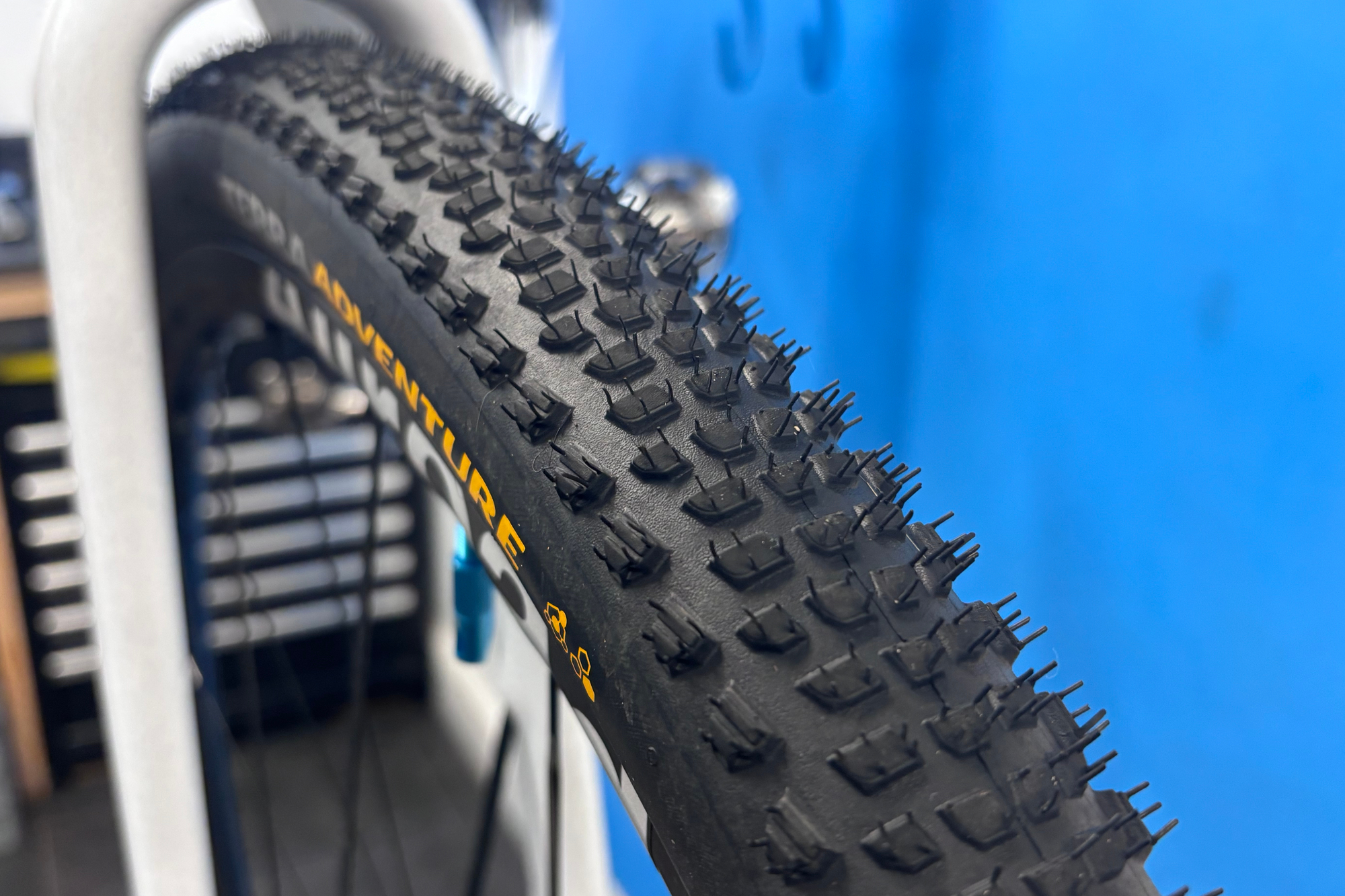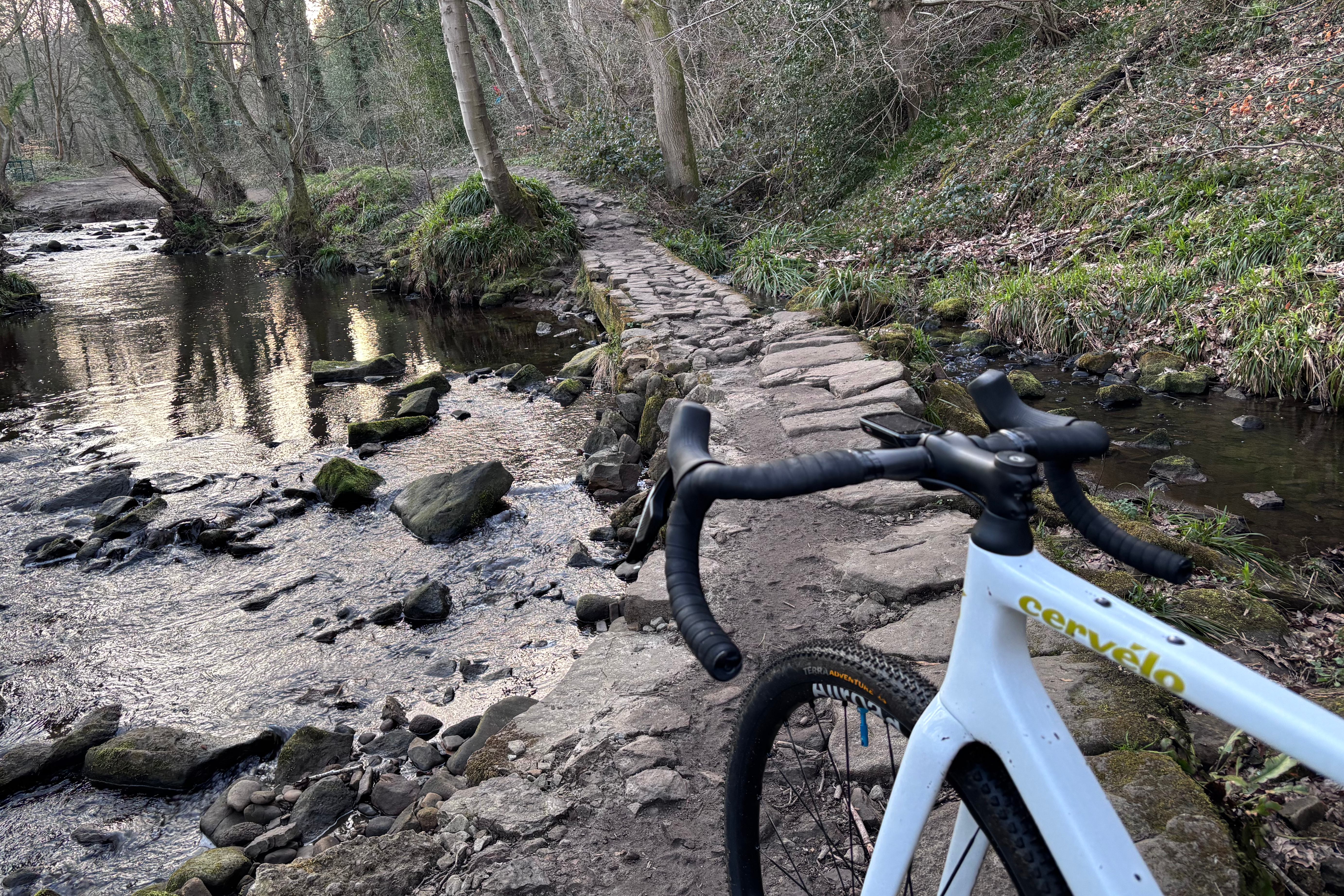I test mountain bikes and gravel bikes, and the Continental Terra Adventure is a great gravel tyre upgrade, but not for the reasons you'd think
By utilising mountain bike technology and design, Continental has created a robust and grippy tyre, but does the added protection compromise the ride?

A grippy, robust tyre that bridges the gap between XC mountain bike and gravel nicely. It's reasonably fast rolling, with excellent feedback and feel despite the extra carcass protection and is a great option for those who tackle more challenging terrain or those looking for a good, reliable bikepacking option
-
+
Lots of grip on a wide variety of terrain
-
+
Trail casing is very robust yet still gives plenty of feedback
-
+
Grip compound works well and rolls faster than the tread would have you think
-
+
Lasted very well during testing, which bodes well for longevity
-
-
-Not the fastest rolling
-
-
-Wider sizes won't work on older gravel or CX frames
You can trust Cycling Weekly.

As part of Continental's recently refreshed gravel tyre range, the Terra adventure is the most robust and grippy option of the five models available. The trend of squeezing mountain bike tyres into gravel bikes has been widely reported, so it's no surprise to see a major brand launching MTB Lite rubber in a quest to produce the best gravel bike tyres. I was lucky enough to ride them on the fabulous technical trails in the Tuscan hills, but how did they fare on a wider range of terrain on my local trails in and around the Peak District?
The construction
The Terra Adventure uses what Continental refers to as their trail casing, which, as the name suggests, is borrowed from their XC mountain bike range. It features a single-ply construction with extra reinforcement in the sidewalls and under the tread for maximum puncture protection.
The tread is more aggressive than the rest of the range and features a 3-3-4 pattern of knobs in the centre of the tyre, with angled and slanted side knobs for maximum corner and off-camber grip. The knobs are also chamfered in one direction to reduce rolling resistance when rolling forward, while still maintaining a squared edge to dig into soft ground when climbing and braking. This is all fairly standard stuff to the flat bar riders amongst us, but reasonably unusual for gravel, where width and rolling resistance seem to be more important.

It uses Continental's latest grip compound, again borrowed from its mountain bike range. Noticing a theme yet? This doesn't roll as fast as compounds used in its road and commuter ranges, but, as you'd probably guess, it is a softer durometer and offers better grip, albeit potentially with less longevity. I had the standard black version on test, but a transparent or brown sidewall version is also available for those (like me) who prefer a tan wall.
I had the 45mm version on test, which tellingly is the narrowest version available. I'd like to test the 50 or 55mm versions, but unfortunately, my Cervelo Aspero and Ribble Ti test bikes won't accommodate anything wider on the rear.
The tyres came in at a respectable 527g, which, given the amount of tread and grip on offer, is pretty good. For comparison, similarly meaty tyres, such as the Schwalbe G-One Bite and Ultrabite, weigh 540g and 745g, respectively, and the Vittoria Terrano Mix weighs 550g in the same 45mm width.
The ride
Fitting was reassuringly easy on the Mavic Allroad SL wheels I used for the majority of my test period; their 25mm internal width I find ideal for gravel, and it also gives the tyres plenty of sidewall support. Continental uses the ETRTO standards for measuring its 45mm width, which is based on a 23mm internal rim. When mounted to the Mavics, they actually measured up a bit narrow at 43.83mm. Not the end of the world, but worth keeping in mind if you are sizing up and worried about clearance.
The latest race content, interviews, features, reviews and expert buying guides, direct to your inbox!

Continental doesn't have a guide for tyre pressures like Vittoria or Silca. Instead, it stamps a recommendation on the sidewall of 29 to 65 psi, which to me is far too wide a range and on the high side, too. I started with my usual base setting of 35 psi and settled on 31 psi for the front and 33 psi for the rear for most of my test period, which I found to be a good compromise of comfort, grip and rolling speed. They handle pressures down to 22-3 psi well at my 80kg weight without any burping or rolling, but I did find it had a detrimental effect on rolling resistance.

Despite its aggressive look, it rolls surprisingly well. It's not as quick as something like a Schwalbe G-One RS or Vittoria Terrano T50, but I was pleasantly surprised. There's an audible buzz when on tarmac where they can feel a bit squirmy in corners, but off-road, that's quickly forgotten, and it's when you hit the trails that they really shine.
They don't offer true mountain bike levels of grip, but they are very good for a gravel tyre, with plenty of support and feedback on softer terrain; this lets you push the bike in the corners and helps cover up the occasional poor line choice too. Handily, they are also very good under braking; should you get carried away on a descent, again with lots of feedback before locking up, and even when locked up or mid-drift, they break away smoothly, which makes controlling any slides much less of a lottery.

The robust build has held up well on the famously unforgiving rocky trails in the Peak District too. I've had no punctures or tyre burps in three months, and there's no noticeable wear to the sidewalls, which is very impressive. They are usually the first thing to go for me as many gravel tyres simply aren't built to deal with rocks and roots rubbing the sidewalls.
It's not only the sidewalls that have lasted well; the tread has too, despite using a grippy and slightly softer compound, with all edges still sharp after numerous technical (for gravel) and long-distance rides.
They excel in loose or soft conditions and are adequate rather than exceptional on smoother surfaces, which is to be expected given the aggressive tread and high levels of grip they offer.
Now that the trails have dried up, I would prefer a faster-rolling version with a smoother tread, but still using the same impressively robust carcass construction. Continental says it's working on such a model, so watch this space.
Value and conclusion
At £54.95 / €61.95, they are in line with other high-end tyres, such as the Vittoria Terrano Mix or Mezcal, which both retail at £54.95 / €58.95, and they are considerably cheaper than the Schwalbe G-One RX Pro at £75 / €74.90. Though competitively priced, they are still not cheap, but they have lasted impressively well and show no signs of wearing out anytime soon.
I was initially unsure how these would perform, as I prefer a less grippy tyre for gravel than I would on an XC bike. I have found that running XC tyres on a drop-bar bike encourages you to ride overly technical terrain and quickly exposes how unsuitable a gravel bike can be in such situations. Thankfully, these are closer to gravel in my eyes, with a nod to their flat-bar cousins, offering more than enough grip paired with impressive robustness and rolling speed.
For those looking for fast race rubber, you'll be better served elsewhere, but if your idea of gravel takes in all kinds of terrains and surfaces and the slower speed isn't a problem, then these could be right up your street. They would make a great tyre for bikepacking, which shouldn't come as a surprise given the name, as they roll well enough, but the extra protection gives peace of mind and is one less thing to deal with on long rides.
You must confirm your public display name before commenting
Please logout and then login again, you will then be prompted to enter your display name.
